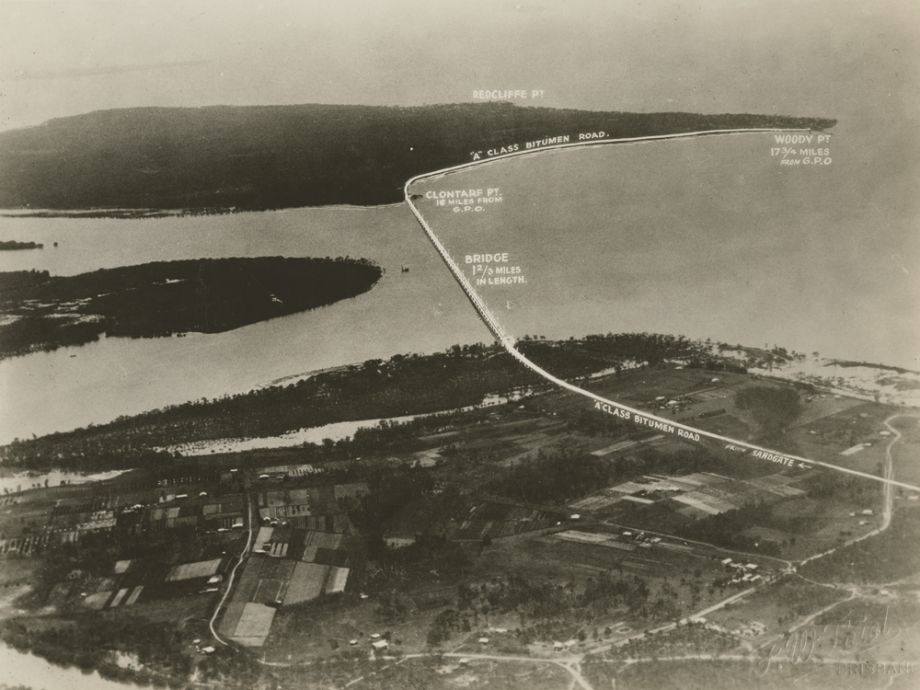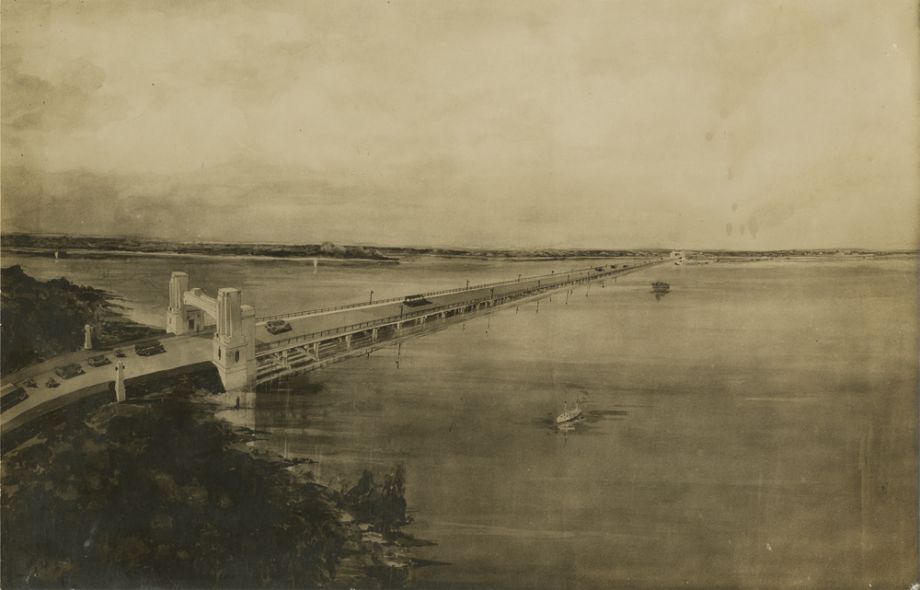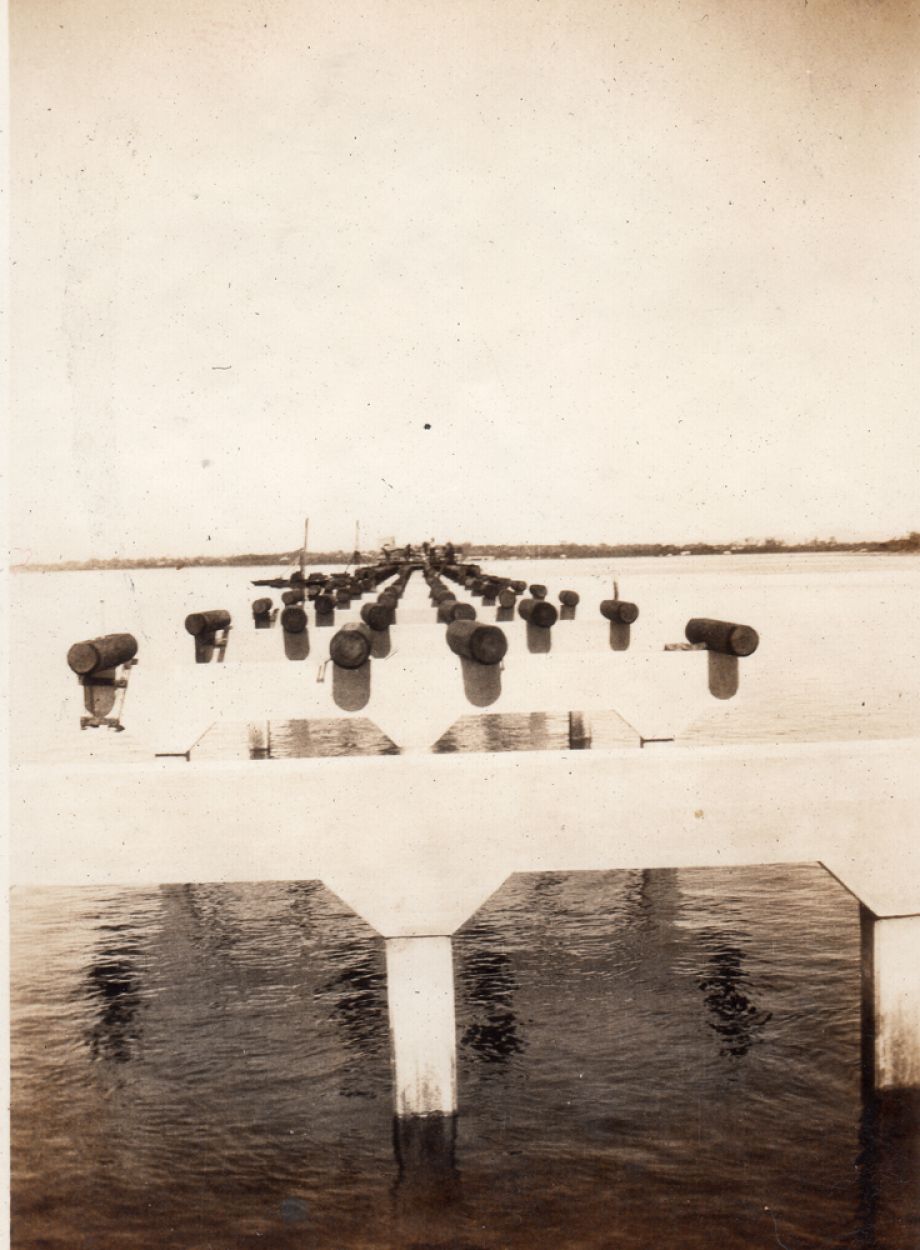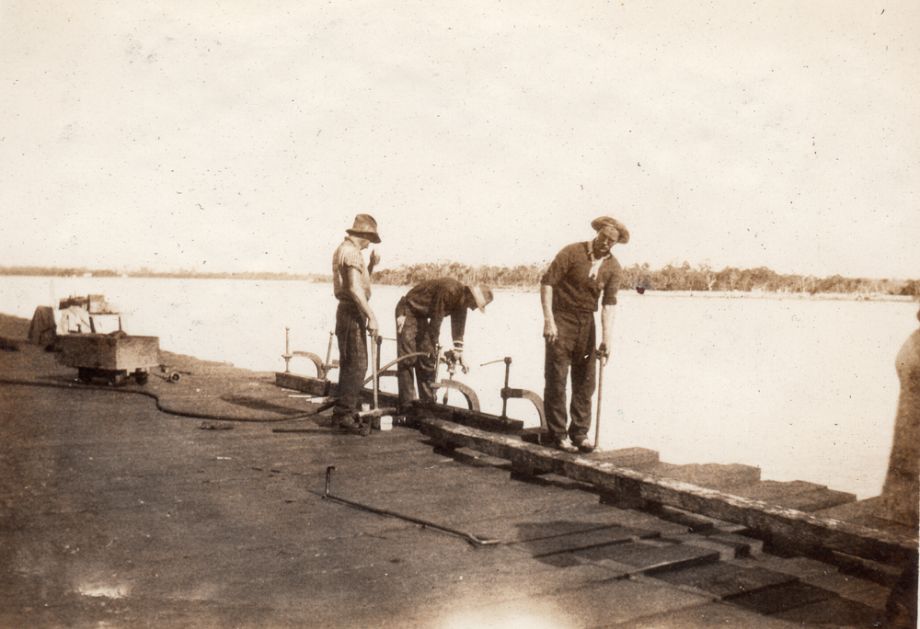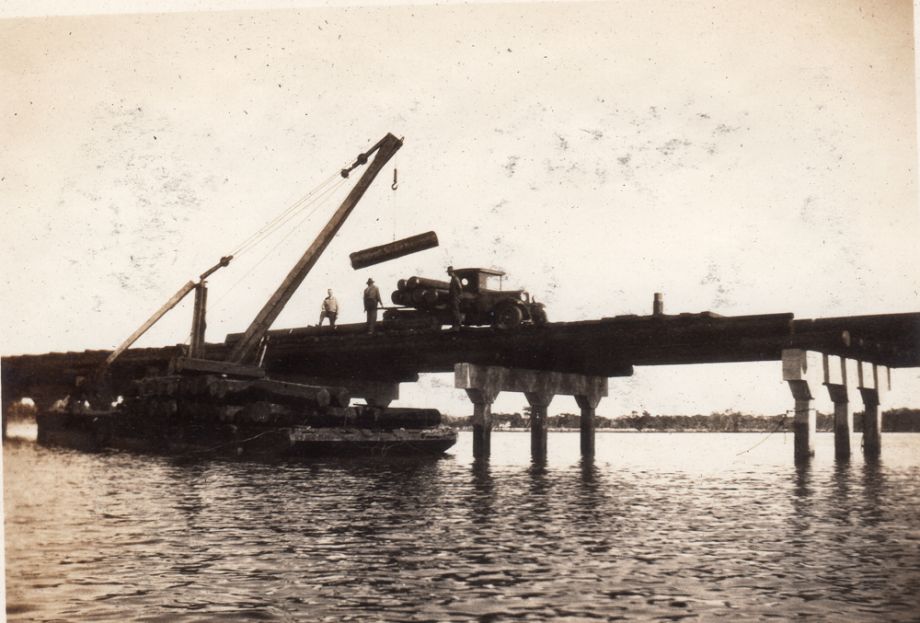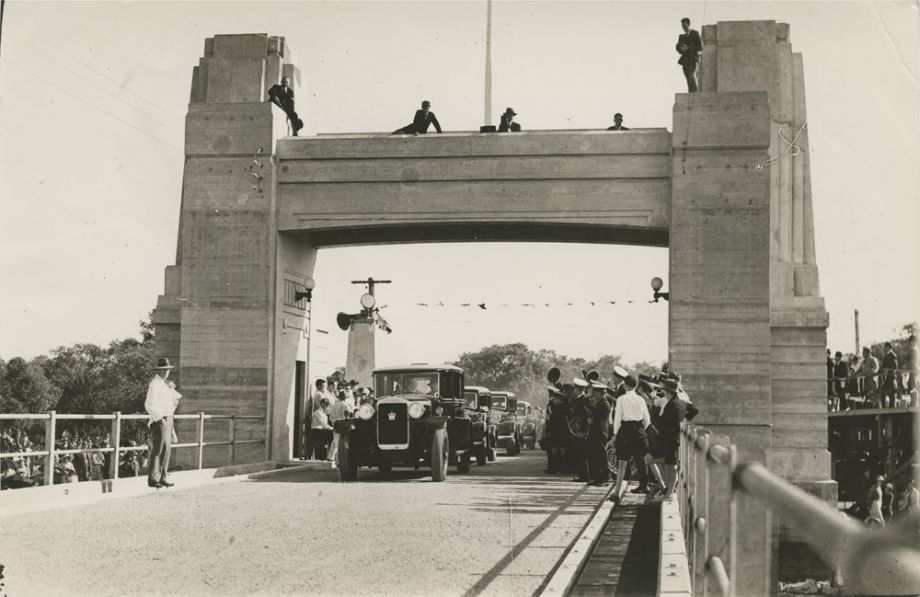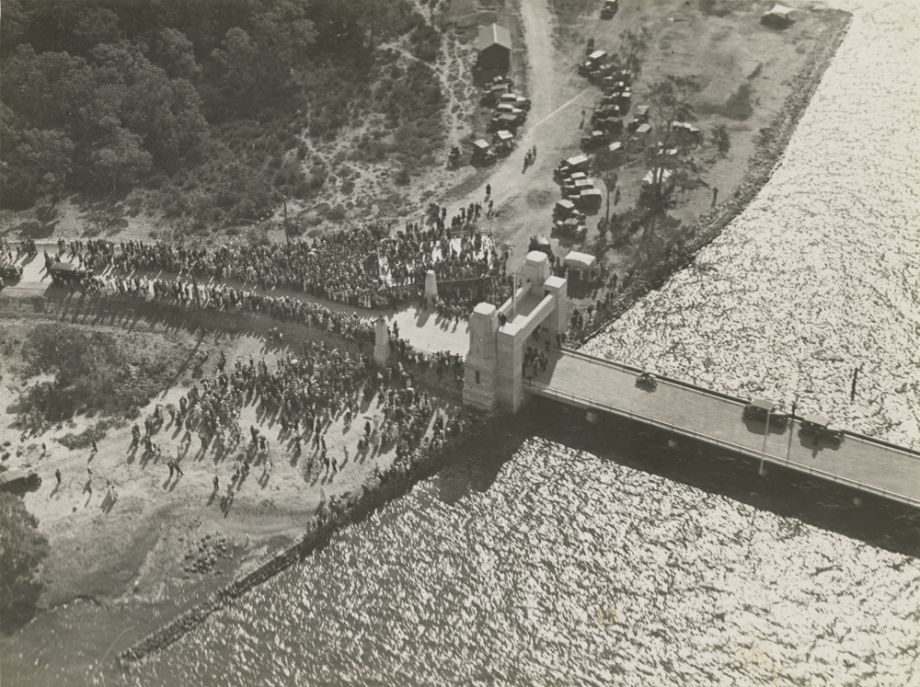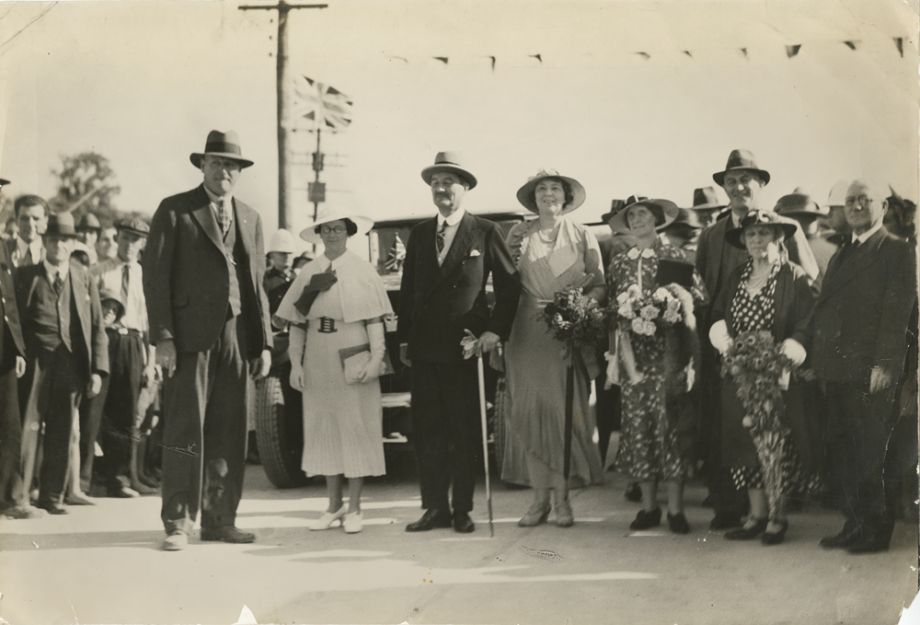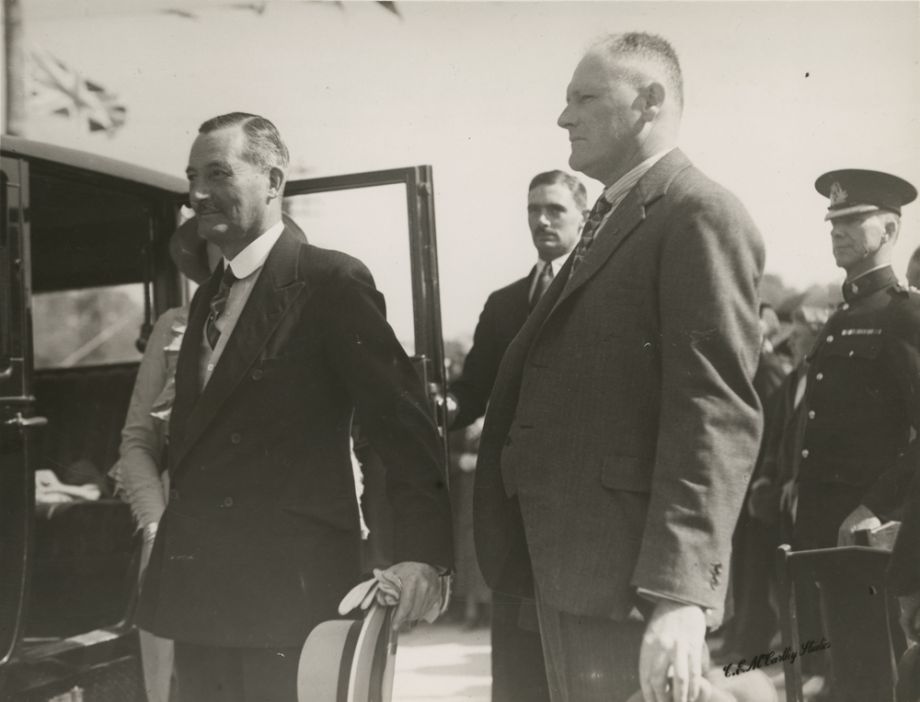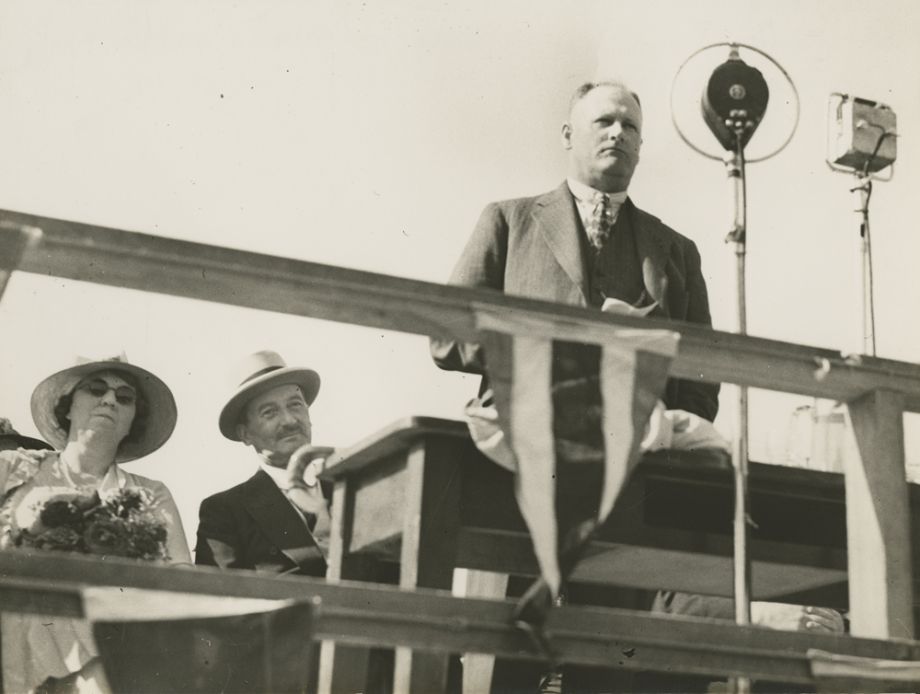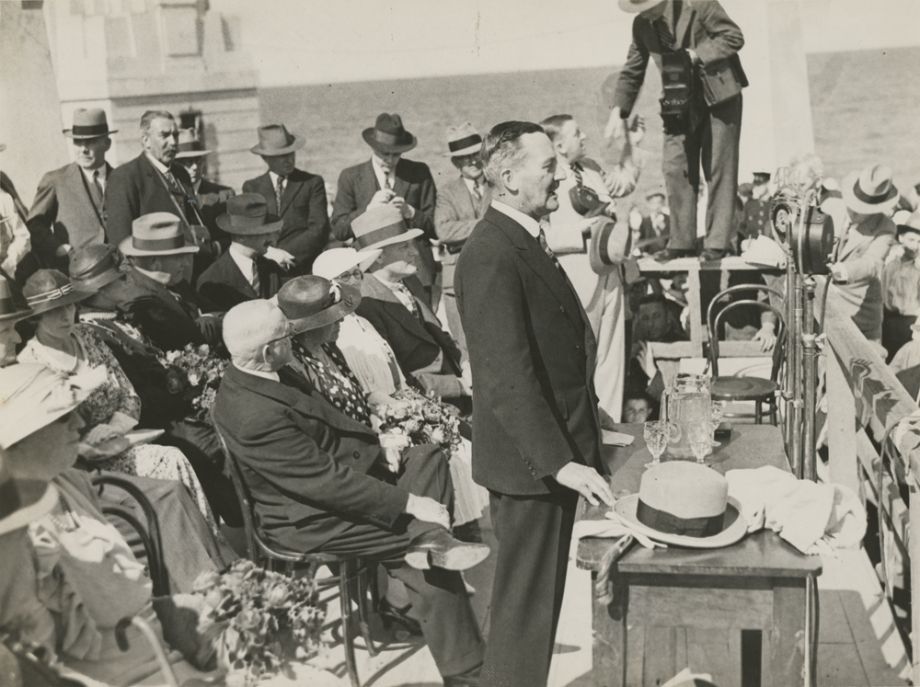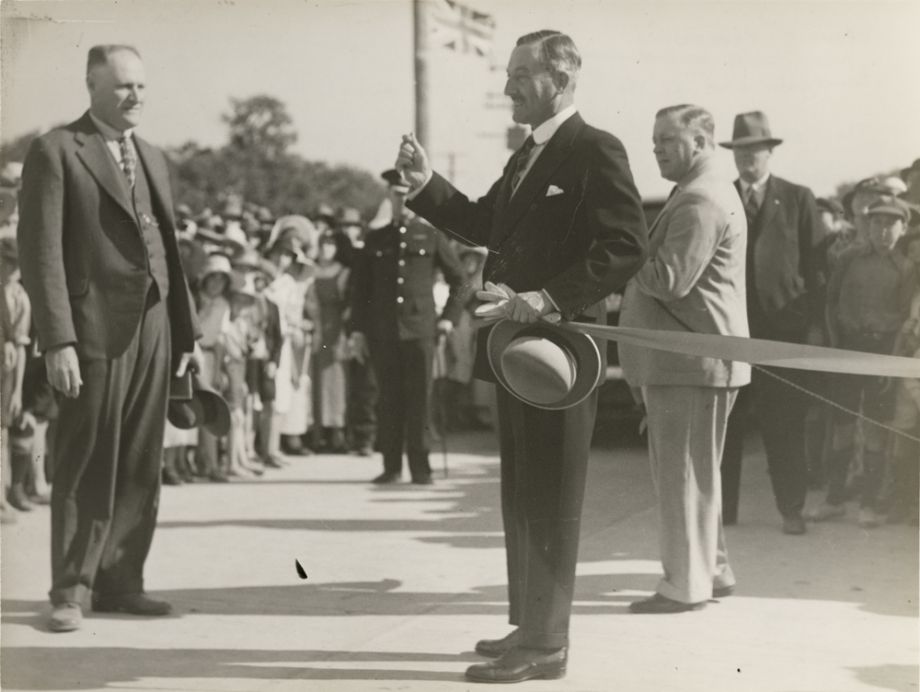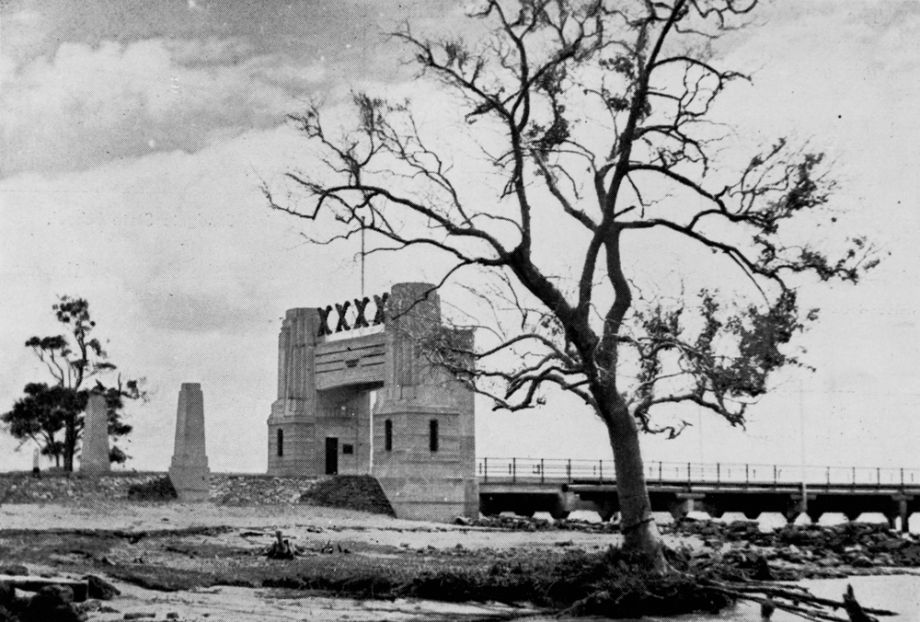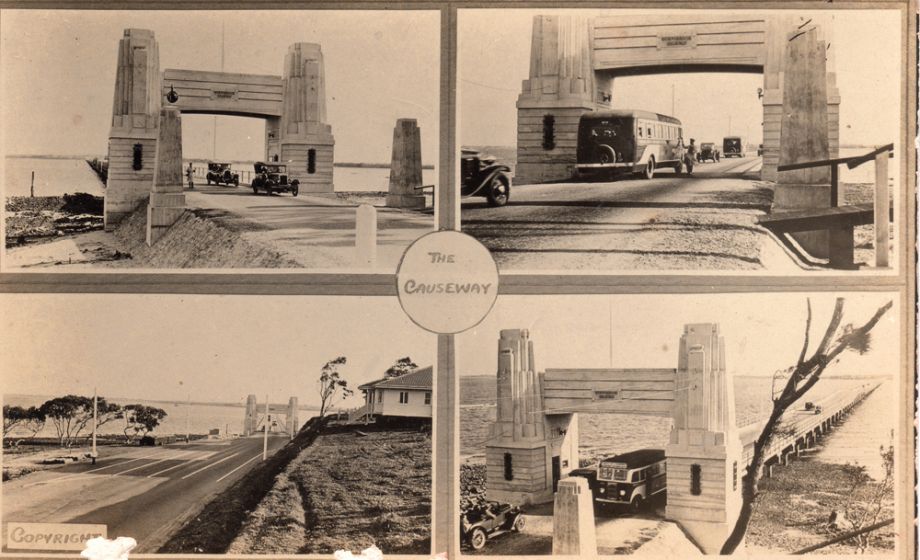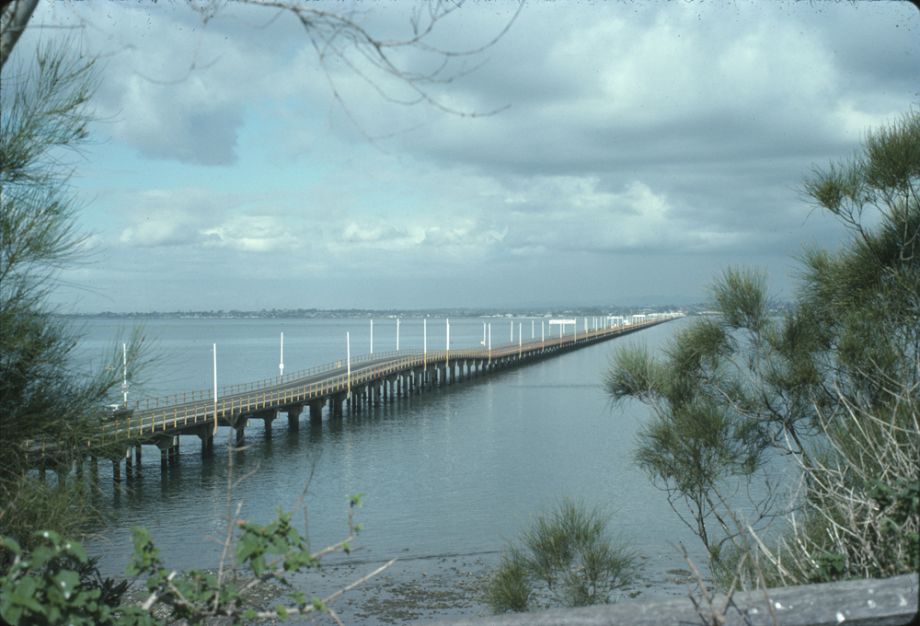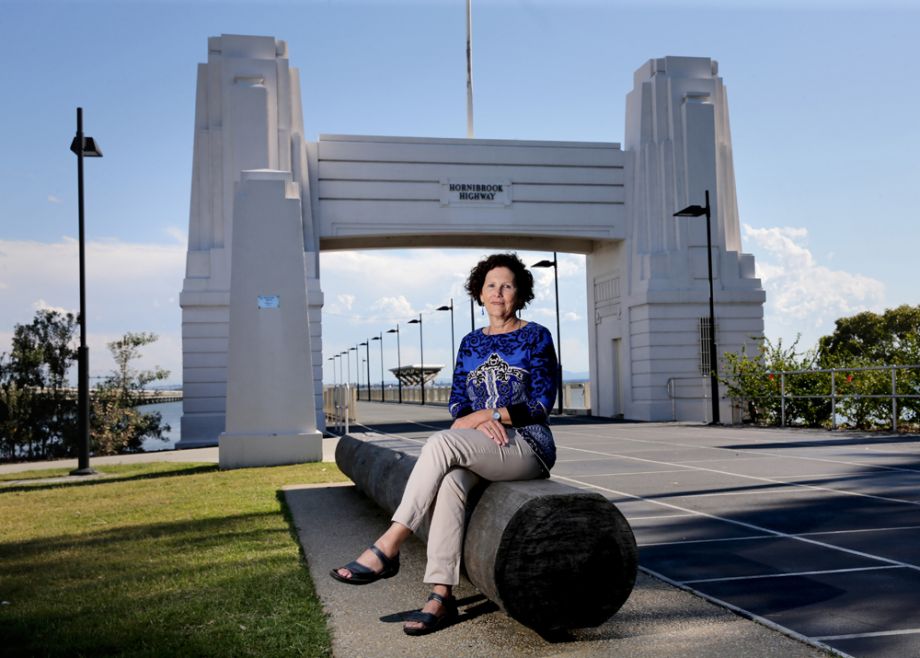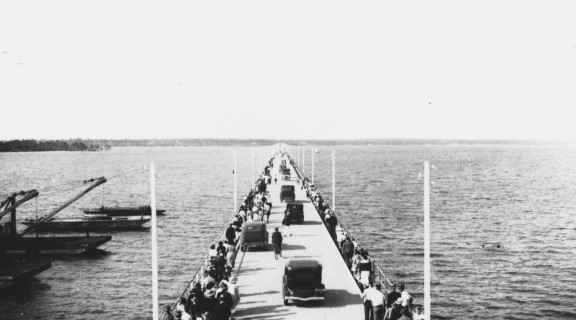
- Home
- The Hornibrook Highway
/
The Hornibrook Highway
The Grey St/William Jolly Bridge, the Hornibrook Highway and the Story Bridge were all opened between 1932 and 1940, opening up land, business, communication and connecting people back and forth across a rapidly growing city and across Moreton Bay to Redcliffe from Sandgate. This project, through the Business Leaders Hall of Fame Fellowship, features an essay and blog on each of the three major Brisbane bridges of the 30s, with photos and anecdotes of life in Brisbane then and the role of MR in shaping a more modern view of Queensland. This edition highlights photos of the building of the Hornibrook Highway, a road link from Brighton and Sandgate to Clontarf Point at Redcliffe with a bridge spanning Hays Inlet and Bramble Bay.
Julie Hornibrook is the recipient of the 2015 Queensland Business Leaders Hall of Fame Fellowship. As an accompaniment to this showcase of historic images, Julie has written an in-depth essay about the building of the Hornibrook Highway.
